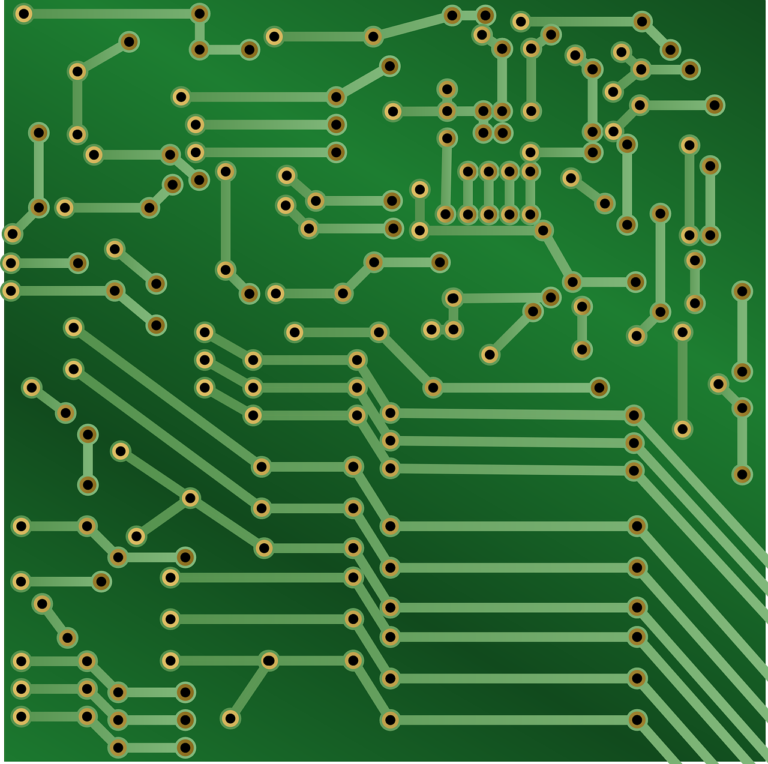The production of essential printed circuit boards (PCBs) results in large environmental damage. This damage affects modern electronic devices. PCB manufacturing requires the chemical composition of heavy metal elements together. It requires intense energy consumption during production. Both environmental degradation and resource exhaustion occur as well. Because of incorrect electronic waste disposal methods. Companies need to install Eco-friendly manufacturing practices. It is also crucial throughout the entire PCB production cycle to achieve eco-friendliness. The following approaches show methods to decrease environmental damage from PCB manufacturing.
1. Use Eco-Friendly Materials
Traditional Printed Circuit Boards include lead and brominated flame retardants. It also contains other dangerous chemicals as their components. These ingredients create environmental and health dangers which increase when disposed into landfills. Manufacturers who want to lower environmental damage should consider implementing the following actions.
- Instead of lead, solder manufacturers should adopt lead-free solder. Because it is more environmentally safe and produces safer disposal conditions for humans.
- Halogen-free laminates should be selected. Because their burn release of toxic substances reduces air pollution.
- You should select PCB substrates either with natural fiber composites or biodegradable polymers. Because they represent better sustainable options than fiberglass substrates.
- Changing to immersion tin and organic solderability preservatives instead of hazardous plating materials. Because it enables waste reduction through the minimization of harmful waste.
2. Reduce Waste in Manufacturing
Production of PCBs leads to much waste that consists of leftover copper materials. As well as chemical residuals and malfunctioning circuit boards. Conserving resources as well as minimizing pollution becomes achievable through waste reduction. Effective waste reduction methods include:
- Accurate cutting methods in manufacturing lead to reduced material waste during PCB production.
- Material recycling technologies allow the recovery and second use of copper materials. As well as unused laminates and soldering resources. It is important to decrease the amount of raw products needed.
- The use of digital printing technology replaces the traditional etching processes. it is crucial to reduce waste generation and boost manufacturing productivity.
- The use of small recyclable containers for PCBs helps decrease supply chain waste production, learn more.
3. Adopt Energy-Efficient Processes
The manufacturing processes of PCBs demand significant amounts of energy during etching operations. As well as when metal plating and laminating. High energy usage leads to greater greenhouse gas emissions. And drives up total production expenses. The reduction of carbon footprints becomes possible through these specific measures:
- Manufacturers who select solar power, wind power, and hydroelectric energy can reduce energy costs. Such renewable sources of energy can power the production areas.
- Contemporary energy-efficient machinery implementation leads to lower power usage and maintains operational performance.
- Factories should extract production heat and repurpose it for energy conservation purposes.
- The production process becomes more efficient when machines run at peak levels. Because it decreases unproductive downtime.
4. Improve Water and Chemical Management
The production of PCBs demands large quantities of water besides dangerous chemicals. These chemicals are needed for cleaning, etching, and plating processes. Sustainable approaches to handling water resources. Chemicals lead to large environmental protection results.
- Wastewater cleanup through advanced filtration techniques allows the recycling of the cleaned water. Thereby decreasing water usage.
- The implementation of non-toxic and biodegradable chemicals allows manufacturers to reduce environmental contamination risks.
- A closed-loop chemical production system enables chemical reclamation to reduce waste elimination.
- Hazardous waste disposal regulations must be followed. When disposing of chemical waste to stop soil and water from becoming polluted.
5. Encourage PCB Recycling and Reuse
Electronic waste makes up a progressively worrisome international issue. Because PCBs represent one of its main contributors. Electronic waste totaling millions of tons goes to landfills yearly. Which results in harmful substances contaminating the environment. For sustainability improvement manufacturers together with consumers can install the following:
- The production of PCBs should involve modular design principles. With minimal adhesive usage to help recycling processes become more efficient.
- Collaborating with certified recycling facilities provides an opportunity to extract valuable materials. It includes copper gold and silver from retired PCBs.
- Introducing a modular PCB structure enables the replacement of different components. products must continue operating. Without replacement thus extending their life.
- The proper knowledge of e-waste recycling disposal methods can be taught to consumers. To cut PCB waste sent to landfills.
Conclusion
The production of environment-friendly PCBs depends on sustainable materials. when coupled with energy-efficient production methods. While implementing waste reduction strategies and reinforcing recycling systems. Manufacturers who install these methods will create environmentally friendly PCBs. For the development of a sustainable electronics sector. The increasing electronic market needs PCB production practices. That protects environmental health while preserving resources for upcoming populations.
